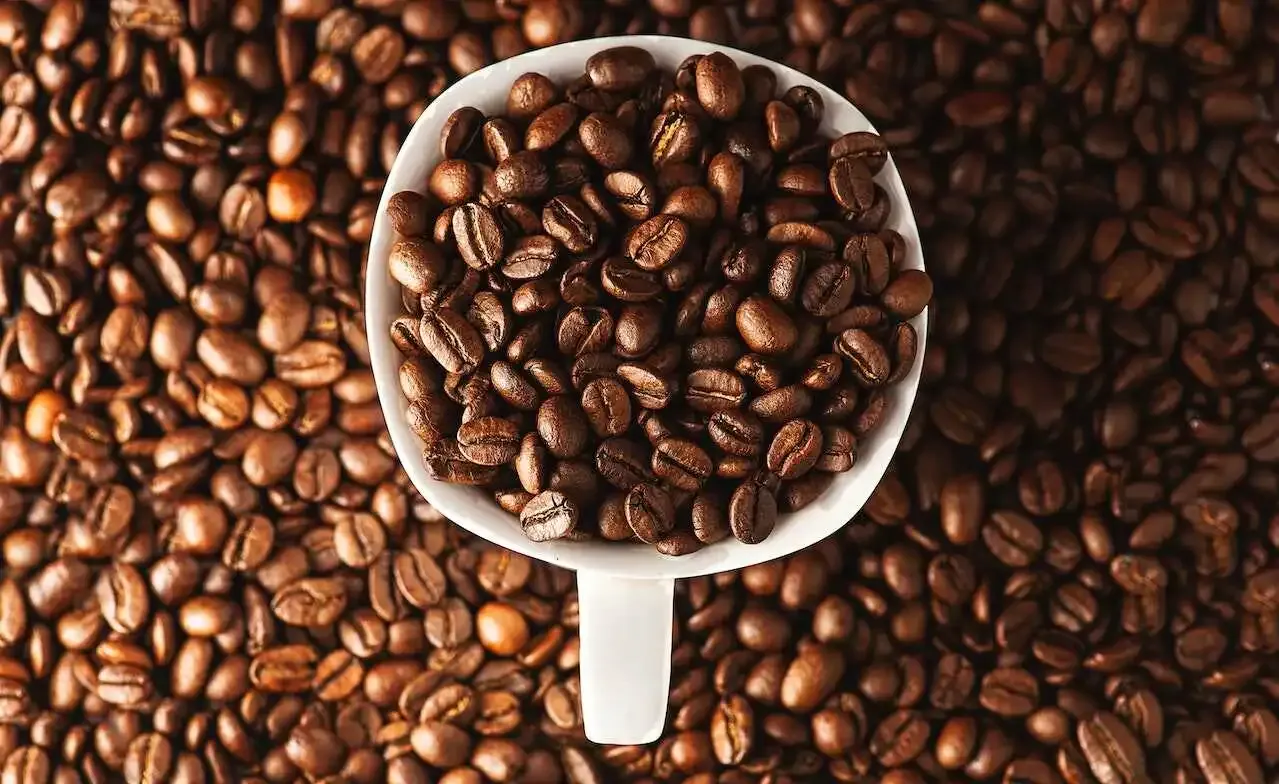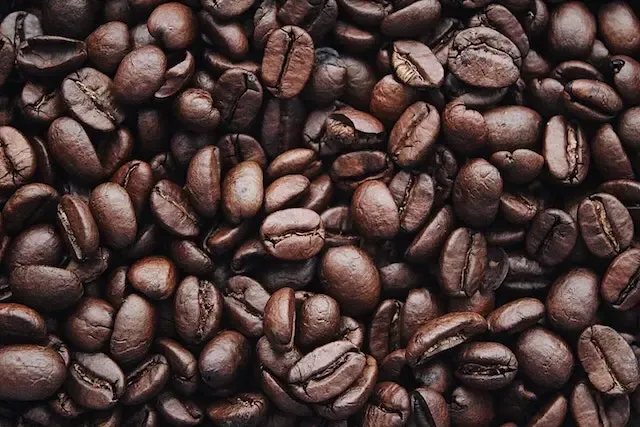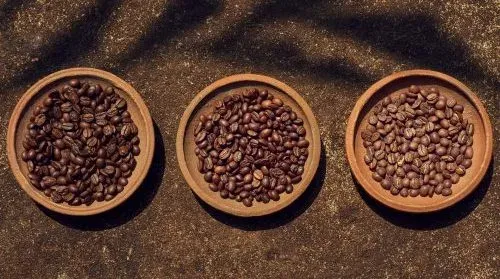 |
| A Cup Above: Uncovering the Best Coffee Beans |
Coffee is one of the most popular beverages in the world, enjoyed by millions of people every day. With a rich history dating back centuries, coffee has come a chief of modern life, consumed in various forms and specifics across the globe. still, not all coffee is created equal. From the origin and processing system to the feed position and brewing fashion, the quality and taste of coffee can vary considerably depending on several factors. In this composition, we will explore some of the swish coffee kinds available, pressing their unique characteristics and flavors.
Arabica Coffee
 |
| Arabica coffee |
Arabica coffee is extensively regarded as the most stylish coffee variety in the world, counting around 60 global coffee products. overgrown in high-altitude regions, this coffee variety is known for its complex flavors and aromas, ranging from gooey and flowery to nutty and chocolatey. Arabica coffee sap is frequently hand- picked and reused using either the wet or dry system, performing in a clean and nuanced mug of coffee. Some of the stylish Arabica coffee kinds include Ethiopian Yirgacheffe, Colombian Supremo, and Costa Rican Tarrazu.
Origin and History of Arabica Coffee
Arabica coffee is said to have begun in Ethiopia, where it was first cultivated around 1,000 times agone
According to legend, a scapegoat herdsman named Kaldi discovered the goods of coffee after his scapegoats consumed the berries from a near tree and came more energetic and lively. He tried the berries himself and was pleased by their stimulating goods. From there, the practice of consuming coffee spread throughout the Arabian Peninsula and beyond, getting an integral part of numerous societies.
civilization and Processing of Arabica Coffee
Today, Arabica coffee is cultivated in numerous countries across the world, with Brazil being the largest patron. Arabica shops bear specific growing conditions, including high mounds and a cool, sticky climate. The shops are grown from seeds and bear careful nurturing and pruning to ensure optimal growth and yield. The sap is gathered by hand and also suffers a rigorous processing and drying process to remove the external layers of the fruit and reveal the prized coffee sap within.
Flavor Profile of Arabica Coffee
Arabica coffee is known for its smooth, delicate flavor profile. It's frequently described as having a balanced acidity, agreeableness, and bitterness, with notes of chocolate, fruit, and flowery undertones. The exact flavor profile can vary depending on the country of origin and the specific growing conditions, as well as the riding and brewing styles used.
Brewing Arabica Coffee
To brew the perfect mug of Arabica coffee, it's essential to use high-quality sap and to follow proper brewing ways. This can include using the right water temperature, grind size, and brewing system to prize the optimal flavor and aroma from the sap. Popular brewing styles for Arabica coffee include drip coffee, pour-over, and French press.
In conclusion, Arabica coffee is a cherished and popular coffee variety with a rich history and a delicate flavor profile. Whether you prefer your coffee black or with milk and sugar, there are numerous ways to enjoy the unique flavors and aromas of Arabica coffee. By understanding the civilization and processing styles, as well as the stylish brewing ways, you can unleash the full eventuality of this awful coffee variety and enjoy a mug above the rest.
Robusta Coffee
 |
| Robusta coffee |
Robusta coffee is the alternate most popular coffee variety in the world, counting around 40 global coffee products. overgrown in lower-altitude regions, this coffee variety is known for its strong and bold flavor profile, with notes of earthiness, bitterness, and chocolate. Robusta coffee sap is frequently machine-gathered and reused using the dry system, performing in a further rustic and violent mug of coffee. Some of the stylish Robusta coffee kinds include Vietnamese Robusta, Indian Monsooned Malabar, and Ugandan Bugisu.
Robusta coffee is the alternate most cultivated coffee species in the world after Arabica. It's known for its strong flavor and high caffeine content, making it a popular choice for espresso composites and instant coffee. In this composition, we will claw deeper into the world of Robusta coffee, exploring its origin, civilization, flavor profile, and uses.
Origin of Robusta Coffee
Robusta coffee is believed to have begun in the Democratic Republic of Congo, where it grew wild in the timbers. It was latterly discovered in Uganda, where it was domesticated and cultivated on a larger scale. moment, Robusta coffee is grown in several countries in Asia and Africa, including Vietnam, Indonesia, India, and Uganda.
The Civilization of Robusta Coffee
Robusta coffee shops are hardy and can grow in low-altitude areas with high temperatures and fall. They're also resistant to pests and conditions, making them easier to grow and gather. Unlike Arabica coffee, Robusta coffee is frequently grown in full sun rather than shade. The sap is larger and rounder than Arabica sap and has an advanced caffeine content.
Flavor Profile of Robusta Coffee
Robusta coffee is known for its strong, bitter taste and earthy aroma. It has an advanced acidity than Arabica coffee, which gives it a sharp taste. Robusta sap is frequently used in composites with Arabica sap to produce a balanced flavor profile. Some coffee suckers enjoy the bold taste of Robusta on their own, while others prefer it as a base for espresso drinks.
Uses of Robusta Coffee
Robusta coffee is generally used in instant coffee and espresso composites because of its strong flavor and high caffeine content. It's also used in some specialty coffee drinks, similar to Vietnamese coffee, which is made with candied condensed milk and Robusta coffee. In some countries, Robusta coffee is used as a traditional drug to treat headaches and fever.
Robusta coffee may not be as popular as Arabica coffee, but it has a unique flavor profile and a range of uses. Whether you enjoy it on its own or in a mix, Robusta coffee is a chief in the coffee assiduity and will continue to be a favorite among coffee suckers worldwide.
Specialty Coffee
 |
| Specialty coffee |
Specialty coffee is a term used to describe high-quality coffee that's grown, gathered, and reused with exceptional care and attention to detail. frequently produced in small amounts, specialty coffee is known for its unique and nuanced flavor biographies, with notes of fruit, flowery, and spice. Specialty coffee sap is generally hand-picked and reused using the wet system, performing in a cleaner and more complex mug of coffee. Some of the stylish specialty coffee kinds include Panama Geisha, Kenyan AA, and Ethiopian Sidamo.
Specialty coffee refers to coffee that has been graded and estimated grounded on its sensitive and physical characteristics, similar to flavor, aroma, acidity, body, and shadow. Specialty coffee is produced from high-quality sap that is grown in optimal conditions, gathered at peak anecdotage, and precisely reused to save its unique characteristics.
Unlike marketable coffee, which is frequently made from low-quality sap grown in large amounts, specialty coffee is a niche product that's produced in lower amounts and ended at a decoration price. The specialty coffee assiduity is driven by a passion for excellence, with a focus on quality, sustainability, and social responsibility.
Specialty coffee shops and broilers are devoted to sourcing and riding the stylish sap from around the world, and to educating consumers about the nuances of coffee flavor and medication. numerous specialty coffee shops offer a range of brewing styles, similar to pour- over, French press, and espresso, to show the unique flavors and aromas of different coffee kinds.
The specialty coffee assiduity has also prodded invention in coffee medication, with new tools and ways being developed to bring out the stylish in each mug. From cold wave- brewed coffee to nitro-invested coffee, the specialty coffee world is constantly evolving and pushing the boundaries of what's possible with this cherished libation.
In addition to its succulent taste and aroma, specialty coffee has also come a symbol of social and environmental responsibility. numerous specialty coffee companies are committed to sustainable sourcing practices, fair trade, and supporting small-scale growers and original communities.
Overall, specialty coffee represents a commitment to excellence, sustainability, and community, and has come a fave of coffee suckers around the world. Whether enjoyed in a cozy café or brewed at home, a mug of specialty coffee is a true indulgence and a festivity of the art and wisdom of coffee timber.
Single- Origin Coffee
 |
| Single-origin coffee |
When it comes to coffee, single-origin sap is largely valued among coffee suckers. Unlike composites that are composed of sap from multiple regions, single-origin coffee is sourced from a single ranch or region. This means that the coffee has a unique taste profile that reflects the particular climate, soil, and husbandry practices of that region. In this composition, we will dive into the world of single-origin coffee, exploring its origins, taste biographies, and fashionability.
Origins
Single-origin coffee has its roots in the specialty coffee movement that surfaced in the 1970s. Coffee broilers and importers began to seek out unique and high-quality coffee sap from specific regions and granges, rather than counting on general composites. The first single-origin coffee to gain wide fashionability was Colombian coffee, which was known for its mild, well-rounded flavor.
moment, single-origin coffee is sourced from all over the world, from Africa to South America to Asia. Each region has its own unique flavor profile, which is determined by factors similar to altitude, soil, and downfall. For illustration, Ethiopian coffee is known for its fruity and flowery notes, while Brazilian coffee is frequently nutty and chocolatey.
Taste Biographies
One of the main benefits of single-origin coffee is that it allows you to witness the unique flavors of different regions. Each coffee has its own distinct taste profile that reflects the region it was grown in. For illustration, coffees from Kenya are known for their bright acidity and gooey notes, while coffees from Indonesia tend to be earthy and full-bodied.
In addition to the region, the processing system also affects the flavor of the coffee. There are two main processing styles washed and natural. bathed coffees are instigated to remove the fruit pulp before the sap is dried, performing in a clean and bright flavor. Natural coffees are dried with the fruit still complete, performing in a sweeter and slushy flavor.
Fashionability
Single-origin coffee offers a unique and different range of flavors that can not be set up in composites. By exploring different regions and processing styles, coffee alkies
can witness a world of flavors and discover their own particular pets. Whether you prefer gooey, chocolatey, or earthy flavors, there's a single-origin coffee out there for everyone.
Blended Coffee
 |
| Blended coffee |
Blended coffee refers to coffee sap that is sourced from multiple origins and blended to produce a unique flavor profile. Blended coffee can be used to produce harmonious and balanced flavors, as well as to punctuate certain characteristics of different origins. Some of the stylish amalgamated coffee kinds include Italian Rally, French Rally, and Breakfast Blend.
Blended coffee is a type of coffee made from an admixture of two or further different coffee sap. It's a popular choice among coffee suckers as it offers a unique taste and aroma that can not be set up in single-origin coffee. Blended coffee can be made by combining sap from different regions, or by blending different repast situations of the same bean.
One of the main reasons why coffee is blended is to produce a more balanced flavor. By combining sap from different regions, broilers can produce a complex flavor profile that balances acidity, bitterness, and agreeableness. For illustration, a mix of sap from Central and South America may have a well-balanced flavor with a medium body and mild acidity.
Another reason why coffee is blended is to insure thickness in flavor. Coffee sap from the same region can vary in flavor depending on factors similar to altitude, soil type, and climate. Blending coffee sap from different regions can help insure a harmonious flavor profile anyhow of variations in individual bean flavor.
Blending can also be used to add flavor notes to coffee that may not be present in a single-origin bean. For illustration, a mix may include sap that has notes of chocolate, caramel, or fruit, which can add depth and complexity to the flavor of the coffee.
riding plays a pivotal part in the flavor of amalgamated coffee. Different repast situations can bring out different flavors and aromas in the sap. For illustration, a light repast may bring out the fruity and flowery notes of a bean, while a dark repast can produce a hoarse, chocolaty flavor.
When it comes to amalgamated coffee, there's no bone- size- fits- all approach. Each mix is unique and can offer a different taste experience. Some popular composites include the Mocha Java mix, which combines sap from Yemen and Java, and the French rally mix, which is a dark repast mix with a hoarse flavor.
amalgamated coffee offers a unique and complex flavor profile that can not be set up in single-origin coffee. By combining sap from different regions, broilers can produce a well-balanced and harmonious flavor profile. Blending also allows for the addition of flavor notes that may not be present in a single-origin bean. The riding position also plays a pivotal part in the flavor of amalgamated coffee. Whether you prefer light, medium, or dark repast, there's an amalgamated coffee out there that will suit your taste preferences.
In conclusion, we've excavated into the world of coffee and uncovered some of the stylish coffee kinds available. From the fruity and complex flavors of Ethiopian Yirgacheffe to the bold and rich taste of Colombian Supremo, there's a coffee variety out there for every coffee nut.
We've bandied the significance of knowing the origin and repast of your coffee sap, as well as the brewing system and outfit used to make the perfect mug of coffee. We've explored the different tasting notes and characteristics of each coffee variety and how to duly appreciate and savor the unique flavors.
Whether you prefer a light repast or a dark repast, a fruity or a chocolatey taste, the world of coffee has a commodity for everyone. By experimenting with different brewing styles and trying out new coffee kinds, you can take your coffee experience to a whole new position.
So go ahead, explore the world of coffee, and discover the uproariousness and depth that it has to offer. With a little bit of knowledge and trial, you can take your coffee game to a whole new position and enjoy a truly exceptional mug of coffee every time.
Resources
- Specialty Coffee Association. "Coffee Tasters Flavor Wheel." https://scanews.coffee/2016/06/22/sca-flavor-wheel-update/
- Coffee Research Institute. "Coffee Varieties." https://coffeeinstitute.org/coffee-varieties/
- National Coffee Association USA. "Coffee Origins." https://www.ncausa.org/About-Coffee/Coffee-Around-the-World
- Coffee Quality Institute. "Coffee Quality Standards." https://www.coffeeinstitute.org/coffee-quality-standards/
- Perfect Daily Grind. "A Beginner's Guide to Coffee Roasts." https://www.perfectdailygrind.com/2019/05/a-beginners-guide-to-coffee-roasts/
- Blue Bottle Coffee. "Brew Guides." https://bluebottlecoffee.com/preparation-guides








0 Comments